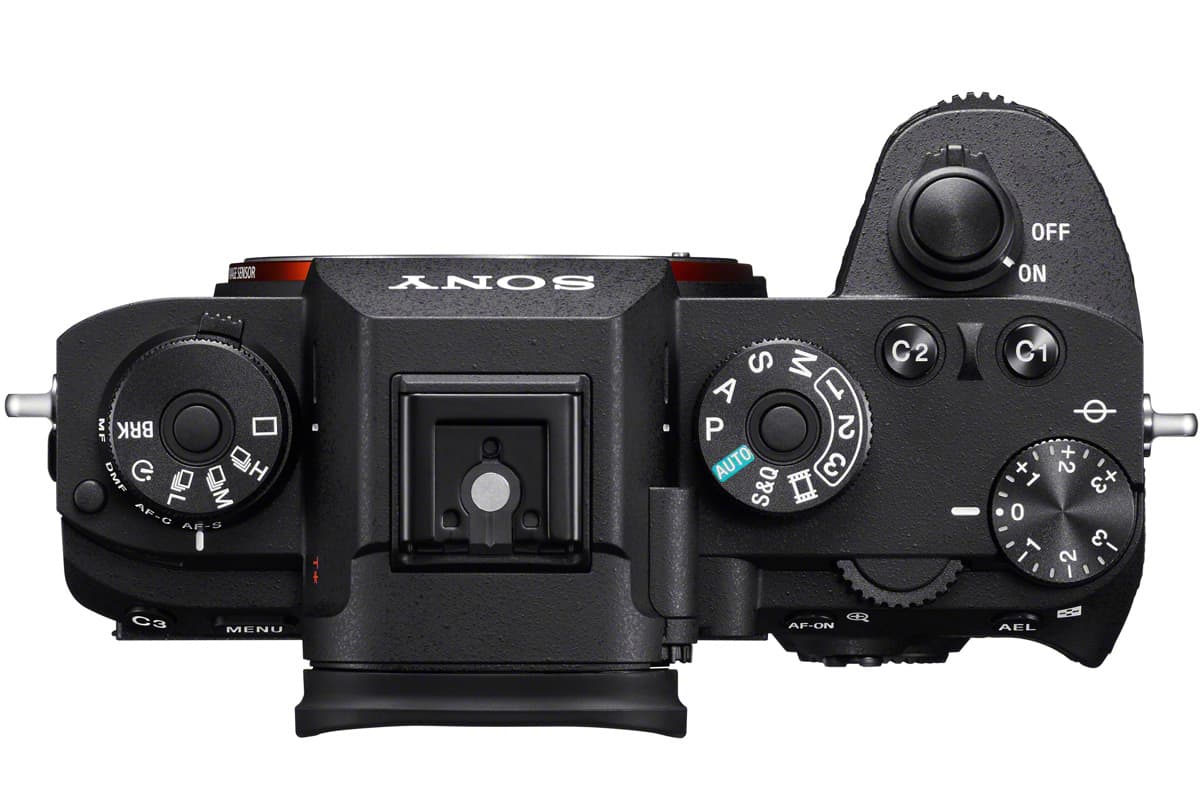The announcement of the Sony A9 came a few months after we all expected to see it at Photokina in September 2016. At that time, we had the Sony A99 II instead – a full-frame “SLT” camera. Now, a few months down the line, the Sony A9 has appeared.
As usual, we have been treated to the usual fanfare surrounding the launch, with Sony stating that its new model is “the most technologically advanced, innovative digital camera that Sony has created.” Not only that, but Sony says that the a9 offers “imaging performance that is simply unmatched by any camera ever crated – mirrorless, SLR or otherwise.”
We haven’t yet had a chance to properly put the Sony A9 through its paces, but for now, we can see how it stacks up against its nearest competitors. A camera like this almost stands alone in the market, but professionals are likely to choose between the Nikon D5, Canon 1DX Mark II, and Sony’s own A99 II. It will be these which we compare the A9 against.
Sony A9 sensor and processor

The A9 uses the world’s first full-frame stacked design, which offers 24.2 million pixel resolution. This kind of sensor enables data speed processing which is 20x faster than previous Sony full-frame mirrorless cameras.
Not only that, but the sensor is joined by a new upgraded BIONZ X processing engine and a front-end LSI which is designed to maximise performance.
All of the other cameras mentioned here have a full-frame sensor, too. However, none offer the same stacked design of the A9, while the Nikon D5 and Canon 1DX Mark II are just 20.8MP and 20.2MP, respectively. If you’re after ultimate resolution, the Sony A99 II uses a 42.4MP design.
Sony A9 autofocusing

Here’s an area that Sony believes will be particularly appealing to sports and action photographers. The A9 has an unmatched 693-point focal plane phase detection system, which is capable of making 60 AF/AE tracking calculations per second. The fast hybrid AF system is 25% faster than that found in the A7R II, which should make it excellent at capturing the moment. Additionally, the focus points cover 93% of the frame.
By comparison, the Nikon D5 has a 153-point AF system, of which 99 are cross type and 55 are available for selection. The Canon 1DX’s system uses 61 individually selection points, of which 41 are cross-type. Finally, the Sony A99 II has a 79-point AF system, combined with a 399-point focal plane AF system to give you 79 selectable points.
The only area in which the Sony is beaten is in sensitivity – the A9 is sensitive down to -3EV, while the Nikon can go down to -4EV.
Sony A9 image stabilisation

The new A9 has a 5-stop shutter speed advantage thanks to it’s 5-axis in-body image stabilisation system. That’s really useful for shooting handheld at slower shutter speeds, or in low light. The Sony A99 II also has a 5-axis image stabilisation system, offering a marginally less impressive 4.5-stop shutter speed advantage.
Neither the Nikon D5 or the Canon 1DX Mark II offer any kind of in-body image stabilisation. These cameras instead rely on image stabilised lenses, even though not every lens offers it.
Sony A9 shutter speed
Thanks to its mirrorless design, the Sony A9 can employ an electronic shutter which results in super fast shutter speeds, and silent shooting. That makes it particularly useful for shooting action where silence is required – such as golf, for example. A super fast maximum speed of 1/32000 is achievable, where the others in this comparison can only reach 1/8000. That’s great for freezing quick moving action, as well as enabling you to shoot at wide apertures in bright light without the need for an ND filter.
Sony A9 frame rate
Another area where Sony has the competition beat is frame rate – and that makes it very attractive for sports photographers. The A9 offers 20fps shooting, which, importantly, is blackout free, for up to 241 raw files or 362 JPEG images in a burst.
By contrast, the Nikon D5 can shoot at 12fps, or 14fps in Live View. It has a 200-raw file buffer, but can only offer “reduced blackout”. Similarly, the Canon 1DX Mark II can shoot at 14fps, or 16fps in Live View, while the Sony A99 II offers 12fps shooting.
Sony A9 viewfinder

We could sit here all day and argue about the merits and drawbacks of electronic viewfinders, but because the A9 is mirrorless, it of course has to have one. The good news is that this high resolution viewfinder is the highest Sony has ever used, with 3,680k-dots. It’s also got twice the luminance of the A7R II, which Sony says makes it the most true-to-life viewfinder yet. The front-end LSI and advanced processor should help to keep EVF display nice and fast, without lag.
Meanwhile, both the Nikon D5 and the Canon 1DX Mark II offer optical viewfinders. Both offer 100%, with 0.72x magnification for the D5 and 0.76x magnification for the 1DX Mark II. The Sony A99 II also uses an electronic viewfinder, but with a lower resolution of 2360k-dots.
Sony A9 screen
Sony has finally embraced touchscreens and is including them in more of its models. Not only is the Sony A9’s screen touch-sensitive, allowing you to set AF point, it’s also got a flexible tilt-type design. That makes it useful for shooting from awkward angles, and is also handy for video work. The resolution is a relatively low 1440k-dots, though.
By contrast, the Nikon D5 has a 2360k-dot touch-sensitive screen, but it is fixed. The Canon 1DX Mark II’s screen is similarly fixed, and touch-sensitive, with a resolution of 1620k-dots. The Sony A99 II’s screen is tilting, and offers 1228k-dots, but is not touch-sensitive.
Sony A9 video
It comes as no surprise to learn that the Sony A9 offers 4K video recording, which comes with full pixel readout without pixel binning. It’s a similar specification for the Sony A99 II. Full HD is available for slow-motion recording up to 120fps.
Both the Nikon D5 and the Canon 1DX Mark II also offer 4K video recording, with the Canon making it available at up to 60p – the only camera here to do so.
Sony A9 memory cards

All of the cameras here offer dual memory card slots, however, each camera has a different configuration. The new A9 offers dual SD card slots, with one of them being compatible with the faster UHS-II format. Meanwhile, the Nikon D5 can either be bought with dual XQD card slots, or dual CF card slots (you’ll need XQD to take advantage of super fast speeds). The Canon 1DX Mark II has one slot for CF cards, and another for the quicker CFast cards. Finally, the Sony A99 II has dual SD card slots, but only one of the slots is compatible with the faster UHS-II standard.
Sony A9 battery life
Here’s one area which the A9 falls down when compared to the Nikon and Canon models. A single charge is only good for 480 shots, according to CIPA ratings. That is poor compared to the Nikon’s incredible 3780 shots per charge, and even the Canon’s 1210 shots per charge rating.
However, to be totally fair, perhaps the A9 should be compared with the Nikon D5 and the Canon 1DX Mark II in terms of battery life when the A9 has the optional battery grip attached. That means you can add two extra batteries for extended shooting.
Sony A9 weight and dimensions

One of the biggest advantages of the Sony A9 over the others here is its relative small weight and size.
It weighs in at 673g body only, compared with 1405g for the Nikon D5 or 1340g for the Canon 1DX Mark II – making the A9 half the weight of the other two.
It’s also of course a lot smaller. Measurements come in at 126.9 x 95.6 x 63mm, compared with the Nikon D5’s 160 x 158.5 x 92mm and the Canon 1DX Mark II’s 158 x 167.6 x 82.6mm.
Sony A9 price
Let’s be clear – none of these cameras are cheap. That said, the Sony A9 is still cheaper than both the Nikon and Canon competitors. The body only retail price will be around £4,500 at launch, while the Nikon D5 can currently be picked up for around £5,099, and the Canon 1DX Mark II for around £4,799. You can also expect the A9 price to drop a little once it has been released.
It’s actually the A99 II which is the cheapest available here, being available for around £2,999 body only.
Read more:
Sony introduces high-speed, high-end Alpha 9
Canon EOS-1D X Mark II field test
Hands-on with the Sony Alpha 99 II









